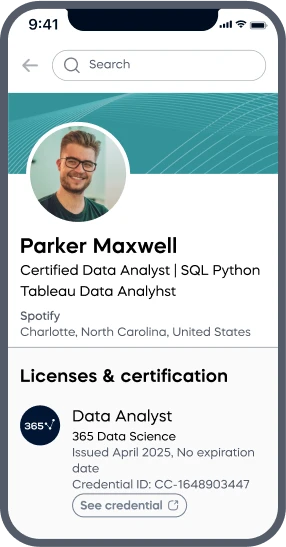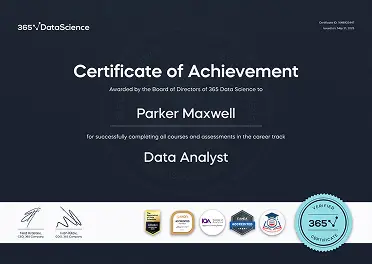Enamul K. B.
See all reviews
Gain first-hand data analyst experience: Use SQL and Tableau to tackle real-world business challenges






Skill level:
Duration:
CPE credits:
Accredited

Bringing real-world expertise from leading global companies
Master's degree, Bioinformatics
Description
Curriculum
Free lessons

1.1 Introduction to the course
5 min

2.1 Motivation - Our Story
5 min

2.2 Intro to the business case
3 min

2.3 Basic Terminology - Net Revenue, Refunds, New vs Recurring Revenue
3 min

2.4 Types of customers
4 min

2.5 Basic Terminology - Customer Churn and Customer Retention
7 min
96%
of our students recommend
9 in 10
people walk away career-ready
$29,000
average salary increase
ACCREDITED certificates
Craft a resume and LinkedIn profile you’re proud of—featuring certificates recognized by leading global
institutions.
Earn CPE-accredited credentials that showcase your dedication, growth, and essential skills—the qualities
employers value most.





Certificates are included with the Self-study learning plan.


How it WORKS